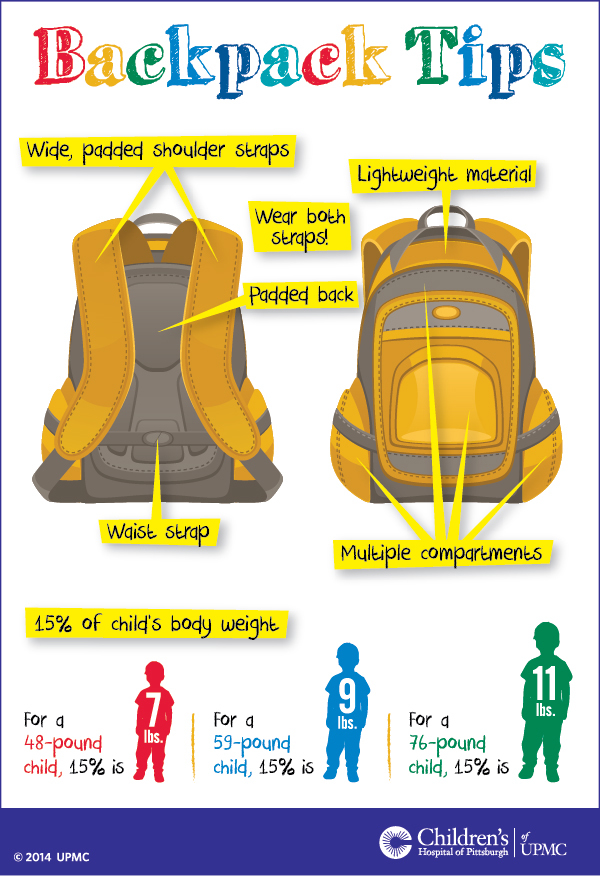Karen Jacobs wrote an article for : The Proceeding of the XVI Annual International Occupational Ergonomics and Safety Conference in 2002 titled: "Are Backpacks Making Our Children Beasts of Burden?" This article shares a lot of good research pointing to injury risks associated with backpack use. Please see the full article for details: https://www.researchgate.net/profile/Karen_Jacobs4/publication/228513365_Are_backpacks_making_our_children_beasts_of_burden/links/553d06560cf245bdd7698aa2/Are-backpacks-making-our-children-beasts-of-burden.pdf
Here are some helpful tips taken directly from the article:
Selecting a pack:
1.
Choose a pack that's appropriate to
the child's size and age. School backpacks come in different sizes for
different ages.
2.
Select a pack with well-padded
shoulder straps. The shoulders and neck are rich in blood vessels and nerves
that when constricted can cause pain and tingling in the neck, arms, and hands.
3.
Choose a pack with a waist belt to
be fastened for extra support and to help transfer the weight from the
shoulders to the body's trunk and hips.
4.
Consider a pack with reflective trim
to increase visibility of kids who carry the school backpack in the evening.
5.
When shopping for a school backpack,
take along books and other materials that the child would carry to judge how
each pack varies when fully loaded.
Loading a pack:
1.
Never allow a child to carry more
than 15% of his or her body weight. That means a child who weighs 100 pounds
should not carry a school backpack that weighs more than 15 pounds.
2.
Load heaviest items closest to the
child's back.
3.
Pack items neatly and organized to
keep books and materials from sliding around in the pack, shifting the weight.
4.
If a pack is too heavy, consider
using one on wheels.
Wearing a pack:
1.
Always wear both shoulder straps to
distribute weight evenly. Wearing a pack slung over one shoulder can cause a person
to lean to one side and curve the spine.
2.
Adjust the shoulder straps so that
the pack fits snugly to the child's back. A pack that hangs loosely from the
back can pull the child backwards and strain muscles between the shoulders.
3.
The bottom of the pack should rest
in the curve of the lower back. It should never rest more than four inches
below the child's waistline.
L.L. Bean and the AOTA partnered together for a portion of the study! Check their websites for more details!
Let's keep our kids healthy and moving well this school year!
~Movement Matters! Whitney Carter PT, DPT

No comments:
Post a Comment